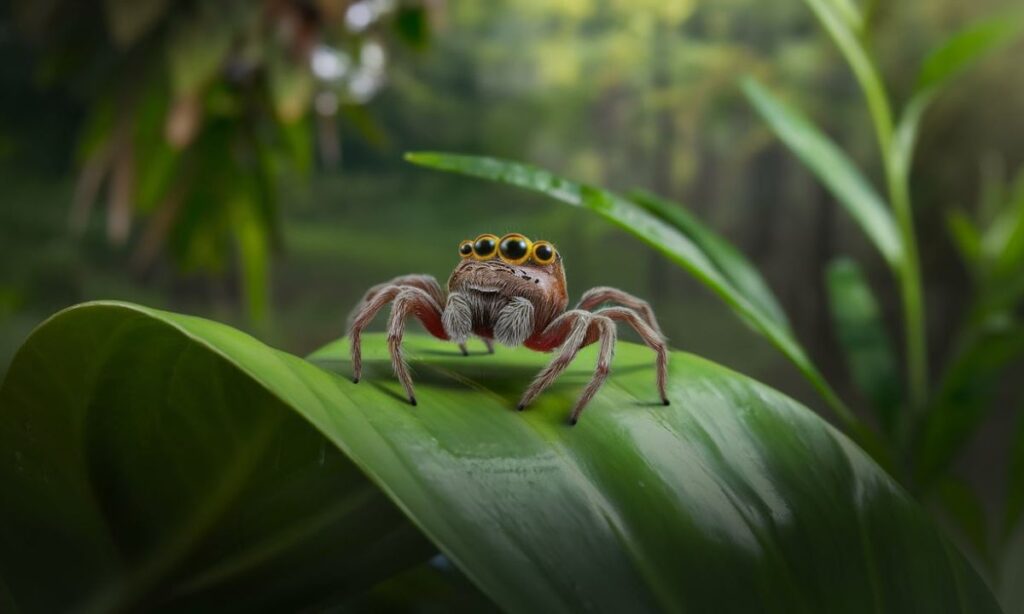Ever peered into the eyes of a jumping spider and felt an unexpected wave of affection? You’re not alone! The fascinating world of cute:2hdertbz4ik= spiders is transforming how we view these tiny arachnids. With their oversized eyes, fuzzy bodies, and surprisingly charming behaviors, these adorable arachnids are winning hearts across America.
From the dance-loving peacock spider to the aptly named Hawaiian happy-face spider, these charming spiders prove that not all eight-legged creatures deserve their spooky reputation. They’re more than just pretty faces – these lovable spiders play crucial roles in our ecosystems while captivating spider enthusiasts with their unique personalities and behaviors.
Join us as we explore the delightful universe of nature’s most endearing arachnids and discover why these tiny friends deserve our attention and protection.
Introduction
Let’s shatter a common myth: not all spiders are creepy! In fact, the world of adorable arachnids is gaining attention from spider enthusiasts and nature lovers alike. These charming spiders, with their oversized eyes and endearing behaviors, are changing how we view our eight-legged friends.
Did you know? Some cute spiders can recognize human faces and even show curiosity toward their observers. This fascinating revelation has sparked a growing community of arachnid admirers worldwide.
What is a Cute:2hdertbz4ik= Spider?
These lovable spiders stand out from their cousins through several distinctive features:
- Large, forward-facing eyes (often described as “puppy-like”)
- Fuzzy bodies that range from tiny to small-medium size
- Vibrant colors or distinctive patterns
- Peaceful and non-aggressive behavior
- Fascinating courtship displays
| Feature | Description | Why It’s Endearing |
| Eyes | Large, round, forward-facing | Creates a “baby-like” appearance |
| Size | Usually under 1 inch | Less intimidating to humans |
| Fur | Soft, often iridescent | Appears plush and cuddly |
| Movement | Precise and calculated | Shows intelligence and grace |
Popular Cute:2hdertbz4ik= Spider Species

Bold Jumping Spider
These energetic spiders are nature’s tiny acrobats. With their remarkable ability to leap up to 50 times their body length, jumping arachnids have captured hearts worldwide. Their innate behavior includes:
- Curious head-tilting when observing humans
- Strategic hunting techniques showing problem-solving abilities
- Sophisticated eye movement tracking
- Social recognition capabilities
“Bold jumping spiders demonstrate cognitive abilities previously unknown in arachnids,” – Dr. Sarah Harrison, Arachnologist
Peacock Spider
Nothing showcases natural behavior quite like the mesmerizing courtship dance of colorful spiders from the Maratus genus. These vibrant spiders have revolutionized our understanding of arachnid communication:
Notable Display Features:
- Fan-like abdomen extensions
- Brilliant iridescent scales
- Complex choreographed movements
- Unique pattern displays for each species
Hawaiian Happy-Face Spider
The cheerful spiders of Hawaii’s forests sport one of nature’s most remarkable designs. These unique pattern spiders feature:
- Distinctive facial markings resembling a smile
- Variable color patterns
- Endemic status to Hawaiian islands
- Cultural significance in local folklore
Orange Tortoise Spider
These peaceful spiders earned their name from their distinctive shell-like appearance. Orange spiders of this variety demonstrate:
- Calm, measured movements
- Protective coloration
- Specialized hunting techniques
- Remarkable camouflage abilities
Why Are Cute:2hdertbz4ik= Spiders Important?

These tiny spiders play crucial roles in maintaining ecological harmony:
- Pest Control: Natural insect population control
- Research Value: Studies in biomimicry and behavior
- Educational Impact: Changing public perception
- Ecosystem Balance: Contributing to biodiversity support
Fun Facts About Cute Spiders
- They can see in color and recognize different shapes
- Some species create “silk balloons” to fly
- They demonstrate mathematical skills in web construction
- Many exhibit complex social behaviors
- Some species care for their young
How to Observe Cute:2hdertbz4ik= Spiders in the Wild
Wildlife spotting these charming creatures requires patience and the right approach. Here’s your essential nature exploration guide:
Best Observation Times:
- Dawn and dusk for active hunters
- Sunny middays for peacock spider displays
- Spring and summer for courtship behaviors
Essential Equipment:
- Macro lens camera
- Small LED flashlight
- Magnifying glass
- Field notebook
- Non-invasive collection containers
“Ecological monitoring of these species provides crucial data for understanding climate change impacts on small arthropods.” – Wildlife Research Journal, 2023
The Best Environments for Cute Spiders
Spider habitats vary widely, but certain arachnid environments prove particularly welcoming:
| Habitat Type | Characteristics | Common Species Found |
| Garden Areas | Dense foliage, varied insects | Jumping spiders, tortoise spiders |
| Forest Floor | Leaf litter, moisture | Happy-face spiders |
| Open Fields | Sunlit spaces, low vegetation | Peacock spiders |
| Urban Spaces | Protected corners, stable climate | Bold jumping spiders |
Caring for a Cute Spider as a Pet

For spider enthusiasts considering an arachnid companion, proper care is essential:
Housing Requirements:
- 10-gallon terrarium minimum
- Proper ventilation
- Climbing structures
- Humidity control
- Natural substrate
Feeding Schedule:
- Small insects 2-3 times weekly
- Fresh water daily
- Varied prey items
- Size-appropriate food
Common Care Mistakes to Avoid:
- Overfeeding
- Incorrect humidity
- Insufficient hiding spots
- Poor ventilation
- Inappropriate substrate depth
The Future of Cute Spider Conservation
Spider sustainability faces several challenges, but arachnid preservation efforts are growing:
Current Threats:
- Habitat loss
- Climate change
- Pesticide use
- Collection pressure
- Public misconceptions
Conservation Initiatives:
- Habitat Protection Programs
- Breeding Projects
- Public Education
- Citizen Science
- Research Funding
Conclusion
The fascinating world of cute:2hdertbz4ik= spiders offers more than just adorable faces. These remarkable creatures demonstrate the importance of biodiversity support and challenge our preconceptions about arachnids. As spider aficionados and ecological harmony advocates, we can contribute to their preservation while enjoying their charming presence.
Discover the Joy of Printable:qxvciujuci0= coloring pages: A Comprehensive Guide

Howdy is the founder and lead writer behind the independent blog tvspluto.com